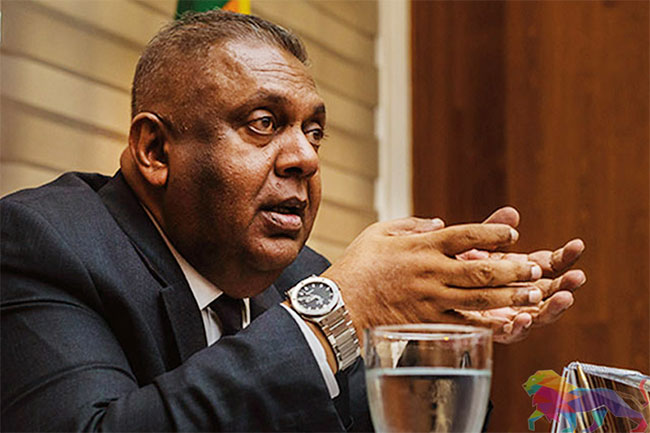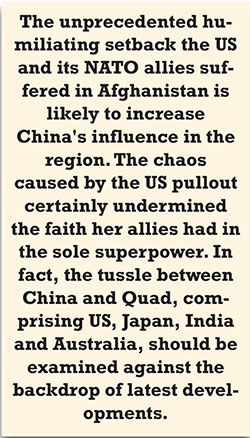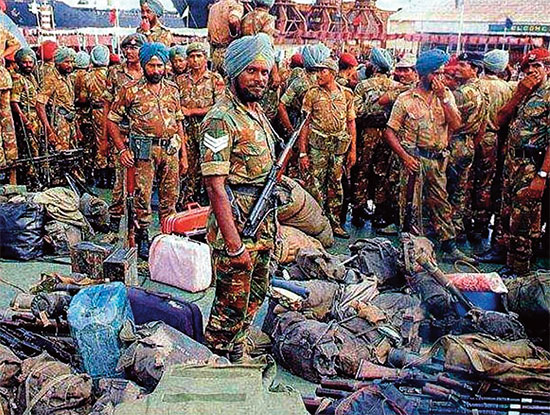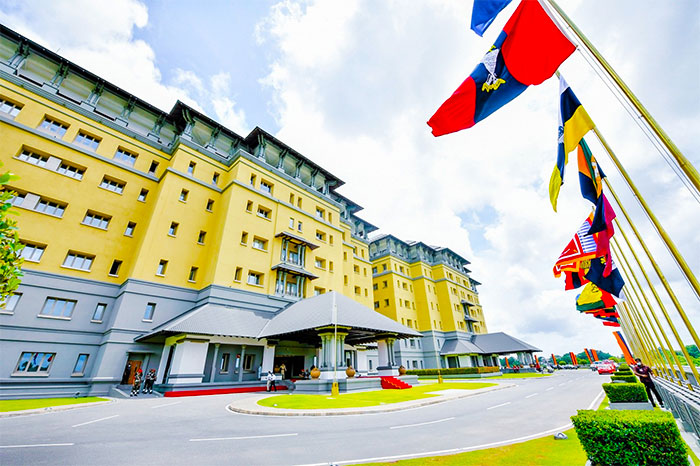SPECIAL REPORT : Part 383
By Shamindra Ferdinando
The late Minister Mangala Samaraweera, on Sept. 8, 2006, warned the Liberation Tigers of Tamil Eelam (LTTE) of dire consequences,unless the group returned to the negotiating table. The LTTE quit the negotiating table, in April 2003, during Ranil Wickremesinghe’s tenure as the Premier. The warning was issued in his capacity as the Foreign Minister, at a meeting with the Colombo-based diplomatic community.
Reiterating the then President Mahinda Rajapaksa’s readiness to consider proposals for a comprehensive and verifiable cession of hostilities, Samaraweera warned the LTTE that military aggression, on their part, would entail, what he called, military costs to them.
The Minister said so when he addressed a section of the diplomatic community in the wake of the successful Army assault on the LTTE first-line of defence across the Kilali-Muhamalai frontline a few days before the military recaptured Sampur in the East on August 4 (Forces seize Tigers’ Jaffna frontline with strapline …any military aggression on their part would entail military costs to them-Foreign Minister, The Island, Sept 11, 2006)
Matara district lawmaker, Mangala Pinsiri Samaraweera, who first entered parliament at the 1989 general election, received the vital foreign affairs portfolio in the wake of the then Premier Mahinda Rajapaksa’s triumph at the 2005 presidential election.
Samaraweera, 65, succumbed to Covid-19, at Lanka Hospital, last week.
Rajapaksa won narrowly against UNP leader Ranil Wickremesinghe, who lost by fewer than 200,000 votes. The polls boycott ordered by the LTTE caused Wickremesinghe’s defeat; he lost the Northern Province Tamil vote, which is traditionally cast in favour of the UNP. Interestingly, the announcement of the undemocratic act of telling the Tamil people not to vote was done by the Tamil National Alliance.
Following the presidential election, the LTTE resumed its offensive action in the Jaffna peninsula, in the first week of Dec. 2005. The LTTE launched a spate of claymore mine attacks in the North in spite of the Oslo-arranged Ceasefire Agreement (CFA) still in place with Peace Co-Chairs, namely the US, Japan, EU and Norway, engaged in the process, in a supervisory role. It looked as if the self-appointed co-chairs were there more to wink at the LTTE as it staged hundreds of CFA violations.
Following the failed attempt to assassinate the then Army Chief Lt. Gen. Sarath Fonseka, in late April 2006, Mavil-aru battle, in June-July 2006, the LTTE launched large scale offensives, in both the northern and eastern theatres, simultaneously, in the second week of August 2006. The LTTE made some rapid territorial gains, though the armed forces gradually stabilised the situation, on both fronts. Having survived a suicide attack, in late April 2006, and flown to Singapore, where he received specialised treatment, Fonseka was obviously back, wanting to atone for what the LTTE did to him. Back at his heavily fortified headquarters in Colombo where he vowed to finish off the LTTE once and for all.
The LTTE strategy suffered another serious setback when then Defence Secretary Gotabaya Rajapaksa, too, survived an LTTE suicide attack in the first week of Dec 2006.
Foreign Minister Samaraweera issued the warning to the LTTE, ahead of the LTTE assassination attempt on Gotabaya Rajapaksa. Samaraweera received his first ministerial portfolio in 1994, thanks to President Kumaratunga, who accommodated him in her Cabinet as Posts and Telecommunications Minister. Kumaratunga also rewarded Samaraweera with Urban Development, Construction and Public Utilities.
A cocky LTTE leadership felt confident that its formations could overwhelm the Army in the Jaffna peninsula, having disrupted the Trincomalee- Kankesanthurai Main Supply Route (MSR). Their plans eventually went awry. However, at the time Samaraweera issued the warning, in early Sept 2006, the LTTE was in a commanding position, with the West openly and repeatedly singing hosannas on its behalf claiming that the security forces were incapable of defeating it. A section of the diplomatic community, as well as various experts, believed the LTTE had the wherewithal to bring offensive actions, in the northern theatre, to a successful conclusion. But, by May 2009, just two years and 10 months after the LTTE resumed hostilities, its fighting cadre was left annihilated.
Mangala receives Foreign portfolio
President Rajapaksa rewarded Samaraweera with the Foreign Affairs portfolio, though the latter hadn’t been his first choice. Rajapaksa-Samaraweera duo emerged as a team during the second JVP-inspired insurgency (1987-1990) when they functioned as key spokespersons for the Mothers’ Front. The group represented the interests of those who had been at the receiving end of the military campaign, backed by UNP death squads. The late Anura Bandaranaike, too, expected the President to reappoint him as the Foreign Minister after his failure to secure the premiership with the JVP’s backing. Bandaranaike was sworn in as the Foreign Minister immediately after the assassination of Lakshman Kadirgamar on the night of August 12, 2005, at his private Bullers Lane residence.
It would be pertinent to mention that the JVP contested the 2004 parliamentary election on the UPFA ticket, following the short-lived so-called parivasa administration.
The JVP achieved the unthinkable by securing 39 seats, including three National List slots. In the immediate aftermath of the 2004 polls victory, the JVP, in a letter dated April 5, 2004, addressed to the then President Chandrika Bandaranaike Kumaratunga, demanded that Lakshman Kadirgamar be made the Premier.
JVP General Secretary Tilvin Silva emphasised that their second choice was Anura Bandaranaike and the third Maithripala Sirisena, the then General Secretary of the SLFP.
However, Maithripala Sirisena strongly advised Kumaratunga against the move, widely believed to have had the backing of staunch Kumaratunga loyalist Samaraweera. Son of the late Minister Mahanama Samaraweera and Khema Samaraweera, outspoken Mangala, a fashion designer by profession, was known for his controversial statements. Samaraweera daringly backed LGBT rights when such things were never even openly discussed here and was at the forefront of such campaigns.
If the JVP strategy succeeded, Mahinda Rajapaksa would have been deprived of the premiership in 2004 and the opportunity to contest the presidential poll in the following year. President Kumaratunga quite wrongly asserted that she could continue till 2006 as the presidential poll scheduled for 2000 under her watch was held in 1999. However, the Supreme Court torpedoed her move. With the collapse of Kumaratunga’s strategy, Samaraweera backed Rajapaksa’s candidature due to failure on her part to secure the backing of party seniors. Samaraweera played a significant role in the overall presidential polls campaign, though both Kumaratunga and Anura Bandaranaike skipped the campaign and more or less worked against Mahinda Rajapaksa, covertly.
Samaraweera had been among several SLFP seniors invited by President Rajapaksa on the evening of Nov 19, 2005 to inform them of the allocation of Cabinet portfolios. The late Jeyaraj Fernandopulle, Maithripala Sirisena, Nimal Siripala de Silva, Mangala Samaraweera, Rohitha Bogollagama, Basil Rajapaksa (not a member of Parliament at the time) and Lalith Weeratunga had been present. Dullas Alahapperuma, too, had been present, though he didn’t sit at that meeting.
“President Rajapaksa didn’t consult anyone as regards allocation of portfolios. He simply informed those who were seated around an oval shaped table what they were going to get. UNPer Rohitha Bogollagama, who switched his allegiance to the SLFP during Kumaratunga’s tenure was offered the Foreign Affairs portfolio. Bogollagama, who held the Foreign Investment portfolio at that time, inquired whether he could retain the same in addition to the foreign affairs. However, the allocation of portfolios quite clearly irritated some party seniors. Shortly, thereafter, only Rohitha Bogollagama sat with President Rajapaksa for dinner whereas others left,” a source familiar with the Temple Trees discussion told the writer.
“Subsequently, the Rajapaksas reached a consensus with Samaraweera by offering him the Finance portfolio, originally offered to Bogollagama, who accepted the reality.
Some believed Samaraweera expected the premiership and was quite disappointed when he was told he couldn’t retain the Urban Development portfolio. Samaraweera couldn’t maintain peace with the Rajapaksas and was unceremoniously stripped of the Foreign portfolio, in January 2007, in the wake of him pursuing an agenda opposed to that of the then Defence Secretary Gotabaya Rajapaksa.
President brought in Bogollagama as the Foreign Minister. One-time UNPer handled the Ministry during the most challenging period with the West exerting tremendous pressure to undermine the war effort.
Ousted from SLFP, Mangala joins UNP
In spite of losing the foreign portfolio, Samaraweera antagonised the Rajapaksas by pursuing an agenda which the latter considered was severely inimical to the overall war effort. President Rajapaksa also felt that Samaraweera’s strategy undermined the ruling party, particular at a time the military was engaged in a desperate battle with the LTTE. Finally, President Rajapaksa sacked Samaraweera, along with Anura Bandaranaike and Sripathy Sooriyaarachchi, in the second week of Feb 2007.
However, within days after declaring war on the Rajapaksas, Bandaranaike backtracked and quietly reached an agreement with the ruling clan. President removed the trio after they skipped the vote on the state of emergency. Bandaranaike re-joined what he called ‘Carnival of Clowns’ much to the dismay of Samaraweera, who didn’t receive the support pledged by his colleagues.
A dejected Samaraweera formed the Sri Lanka Freedom Party (Mahajana) Wing. Samaraweera couldn’t secure the much expected backing required to sustain his campaign and finally disbanded his unregistered party, in August 2010, to accept the UNP membership. However, by then Samaraweewa had re-entered Parliament, from the Matara district, on the UNP ticket. Samaraweera had no option but to accept Ranil Wickremesinghe’s leadership and worked diligently for the UNP’s victory, five years later.
Samaraweera played quite a significant role as an Opposition UNP member (2010-2015) and member of the yahapalana administration (2015-2019) before he switched his allegiance to Samagi Jana Balavegaya (SJB) leader Sajith Premadasa.
However, Samaraweera deserted Premadasa in next to no time ahead of the last parliamentary election in August 2020. In an obvious bid meant to undermine the SJB, Samaraweera declared he wouldn’t be in the fray though he handed over nominations as the leader of the Matara District SJB.
Role in 2010 prez poll
In his capacity as the Foreign Minister, Samaraweera clashed with Gotabaya Rajapaksa’s strategy. One of the major issues of disagreement between the two was Samaraweera’s push for the re-opening of the Kandy-Jaffna road, at Muhamalai, to pave the way for the resumption of overland traffic to and from the Jaffna peninsula. Gotabaya Rajapaksa dismissed the suggestion. Rajapaksa asserted that Muhamalai wouldn’t be re-opened through negotiations with the LTTE. Instead, the re-opening would be done by clearing the LTTE fortifications across the Kilali-Muhamalai-Nagarkovil line.
The then Defence Secretary Rajapaksa told the writer of his decision not to re-open the Muhamalai entry/exit point in agreement with the LTTE, under no circumstances. They also disagreed on the deployment of SLAF choppers to move LTTE leaders around (this was done in terms of the Oslo understanding) and the handling of international NGOs. The Foreign Ministry asserted the military would antagonise Western powers whereas the Defence Secretary emphasised that nothing could be allowed to undermine the war effort.
As promised, the government re-opened the Kandy-Jaffna A9 road, only after the eradication of the LTTE in 2009.
Having ridiculed Fonseka as a person not even capable of commanding the Salvation Army, Samaraweera had no qualms in accepting the challenging task of being the Opposition candidate’s campaign strategist. In fact, Samaraweera, on behalf of Fonseka, assured the US of his good intentions. One such meeting took place on January 6, 2010, a few days before the then US Ambassador in Colombo, Patricia Butenis, in a leaked diplomatic memo, named the Rajapaksa brothers, Mahinda, Gotabaya and Basil and Sarath Fonseka, as war criminals. The massive defeat suffered by Fonseka, at the January 2010 presidential election, revealed serious shortcomings in the overall strategy. The Fonseka campaign suffered due to foolish attempts to placate the Tamil electorate by blaming the Army for battlefield executions during the last phase of the Vanni east offensive. Samaraweera played a significant role in forming the US backed alliance which included the Tamil National Alliance, onetime cat’s paw of Velupillai Prabhakaran. Samaraweera also facilitated the JVP’s participation in the high profile project, spearheaded by the UNP.
Having defeated Ranil Wickremesinghe, by 180,000 votes, at the 2005 presidential election, the President secured a second term by polling over 1.8mn more votes than the war- winning Army Commander. Obviously, Samaraweera’s strategy didn’t work, though many, including some sections of the diplomatic community, strongly believed the former Foreign Minister could turn tables on Mahinda Rajapaksa. At the end, the UNP-led camp made a ridiculous bid to blame the humiliating defeat Fonseka suffered on what bankrupt JVP called a computer jilmaart (fraud)
Mangala as yahapalana FM
Samaraweera who enjoyed excellent relations with the JVP at politically crucial periods, played strategic roles in both the SLFP and UNP-led camps. At the 2005 presidential poll, Samaraweera threw his weight behind Mahinda Rajapaksa and five years later the electorate saw him spearheading Fonseka’s presidential campaign. Samaraweera proved again in politics there were no permanent friends or enemies.
Perhaps, one of Samaraweera’s major successes was his ability to secure the support of the powerful Tamil Diaspora. Samaraweera was quite satisfied with the way he handled the Diaspora in the run-up to the 2015 presidential election. The writer, who accompanied the government delegation to London, led by President Sirisena, had an opportunity to discuss the matter with the then Foreign Minister Samaraweera during the visit a couple of months after the presidential election.
Samaraweera facilitated the TNA’s backing for Sirisena that made his triumph over Mahinda Rajapaksa a reality.
The writer sought GTF’s spokesperson Suren Surendiran’s comment on Samaraweera’s demise Surendiran said that his first ever interaction with the late lawmaker had been in 2017 in his personal capacity. However, as the GTF spokesperson, Surendiran had interacted with Samaraweera, in 2011, and again when he visited the UK, in 2012, over dinner at his place with fellow colleagues of GTF. Surendiran said: “In September 2013 we formally met along with other politicians and civil society activists from Sri Lanka, and overseas, in Singapore. We, as GTF, have met him several times in the UK, Germany, Washington, Switzerland, Australia and Singapore.”
Responding to another query, Surendiran said that Samaraweera had been instrumental in arranging the GTF’s first meeting with the then President Maithripala Sirisena, in 2015, in London. Yes, I met you (the writer) downstairs after that meeting). “Mangala was not just a fellow Sri Lankan and politician, he was a great friend. Mangala spoke to several of us from GTF, from various countries, at a virtual meeting, on 17 July 2021. My last personal interaction was on 06 August, 2021, via texts. Under normal circumstances he would have wished me on my birthday but that wasn’t to be as he was moved to ICU a couple of days before.”
Unlike many of his colleagues in the government and the Opposition, Samaraweera never hesitated to take a public stand on the post-war national reconciliation process. Samaraweera openly contradicted President Sirisena’s frequent claims that he hadn’t been aware of the finalisation of the Geneva Resolution on Oct 1, 2015.
Responding to the strong criticism of his role in the Geneva process, Samaraweera included the following section in a bigger statement he issued during the yahapalana administration: The final text of the resolution was largely negotiated over the phone, with the President and I at the same hotel in New York, and the Prime Minister in Colombo, accompanied by the Secretary to the Ministry of Foreign Affairs, at the time, and the Ambassador of the US and High Commissioner of the UK. Once consensus was reached , the Secretary to the Ministry of Foreign Affairs, at the time, who was in Colombo, had coordinated with Sri Lanka’s Permanent Representative to the UN in Geneva and conveyed the decision of the Government of Sri Lanka to the Human Rights Council.”
What Samaraweera didn’t say was that Sri Lanka’s Permanent Representative to the UN in Geneva, Ravinatha Aryasinghe, had rejected the draft just over a week before, during informal discussion with the Sri Lanka Core Group, headed by the US. Whatever the likes of Samaraweera said the UNP earned the wrath of the people for what was called Geneva betrayal. The treachery in Geneva proved to be as bad as the Treasury bond scams, in Feb 2015 and March 2016, leading to the humiliating defeat at the Feb 2018 Local Government polls. Although President Sirisena switched portfolios, held by Samaraweera and Finance Minister Ravi Karunanayake, in May 2017 in consultation with UNP leader Wickremesinghe, the rot continued unabated. The Wickremesinghe-Samaraweera led strategy that pushed the country towards the US-led Quad alliance with Sri Lanka entering into a Comprehensive Partnership with Japan in the first week of Oct 2015, in addition to talks on SOFA (Status of Forces Agreement) and MCC (Millennium Challenge Corporation) agreements also with the US against the backdrop of President Sirisena entering into ACSA (Access and Cross Servicing Agreement) didn’t help the then government at all.
Finally, Samaraweera abandoned the UNP and joined the newly formed SJB soon after the 2019 presidential poll only to quit the parliamentary election at the eleventh hour. Following the SLPP’s sweeping victory at the general election, Samaraweera launched a political campaign with the involvement of some civil society activists. His office, situated at T.B. Jayah Mawatha a little distance away from SLFP main office, was called ‘Freedom Hub’, where he addressed his last media briefing on July 25.
Samaraweera warned the current leadership of the dire financial crisis experienced by the country not only due to the raging Covid-19 epidemic but waste, corruption, irregularities and negligence as well. At the time Samaraweera served as the Finance Minister (May 2017 to Nov 2019) the government revenue surpassed Rs 1,900 bn. The shortsighted policy of the SLPP that did away with a range of taxes and duties, immediately after the presidential election resulted in the loss of over Rs 500 bn in government revenue, which too contributed to the current messy financial situation. Perhaps one of Samaraweera’s major achievements was the transformation of the telecommunications sector though he too couldn’t absolve himself of being part of an utterly corrupt and ruinous political party system.

 She may have even assented to the ambush of a Sri Lankan military patrol, by Tamil terrorists, at Thinnavely, Jaffna, that was used by vested forces to trigger the anti-Tamil violence, in the south, with police not lifting a finger to stop it, let alone even firing a warning shot.
She may have even assented to the ambush of a Sri Lankan military patrol, by Tamil terrorists, at Thinnavely, Jaffna, that was used by vested forces to trigger the anti-Tamil violence, in the south, with police not lifting a finger to stop it, let alone even firing a warning shot.

